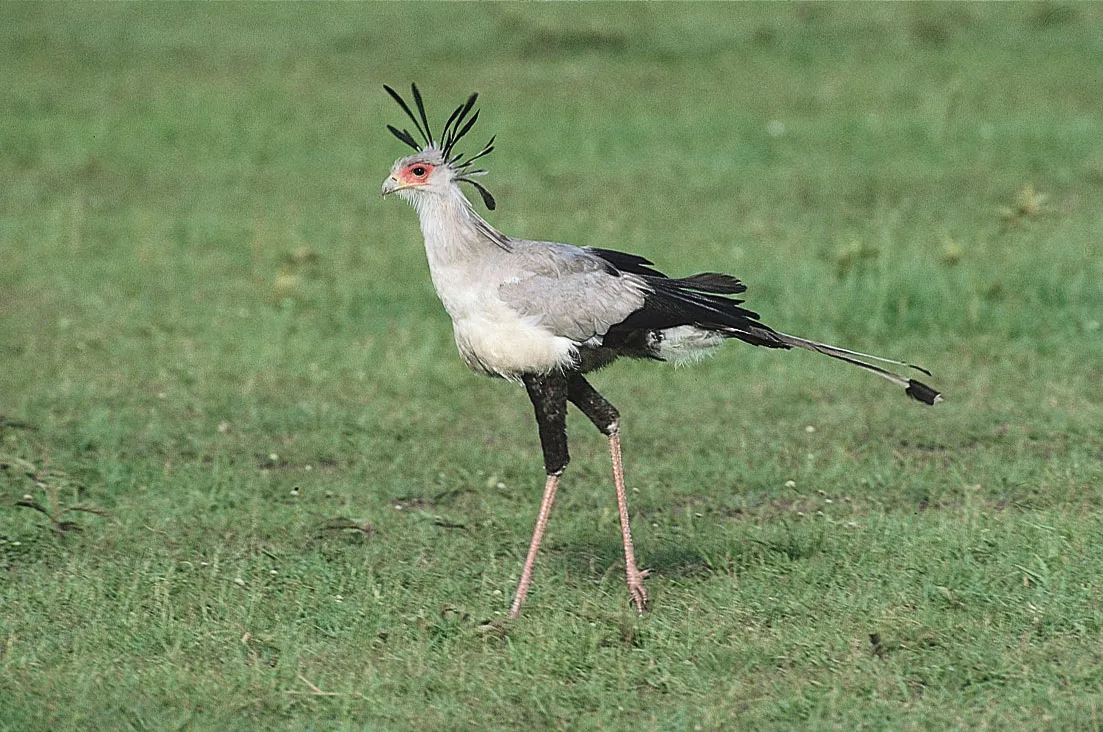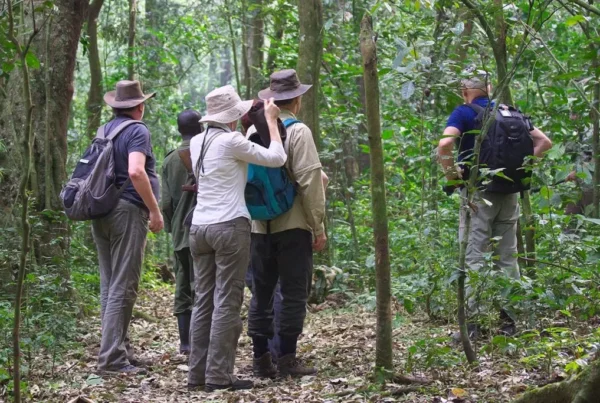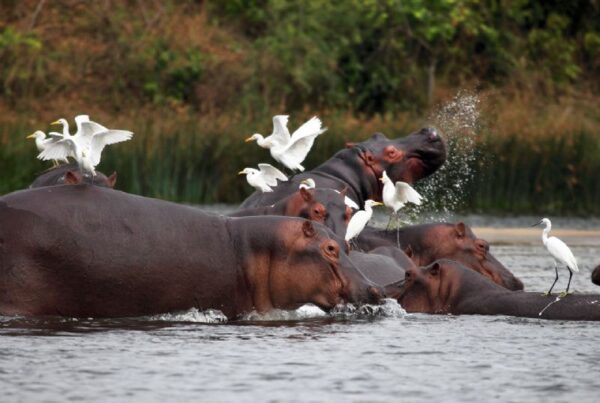Introduction to the Facts About the Secretary Bird
With long stilt-like legs, an eagle’s fierce gaze, and a striking crest of quill-like feathers, the Secretary Bird is one of Africa’s most recognizable and extraordinary birds.
Named perhaps for its resemblance to a Victorian-era clerk with pen-like feathers behind the ears, this terrestrial raptor is anything but desk-bound.
Roaming the grasslands of sub-Saharan Africa, the Secretary Bird is a master predator that prefers to walk rather than fly—and it has one particular enemy: snakes.
But there’s much more to this fascinating bird than meets the eye. In this article, we explore five incredible facts that showcase why Sagittarius serpentarius
deserves your admiration and attention on your next African safari.
1. The Secretary Bird Is a Terrestrial Raptor
Unlike most birds of prey, the Secretary Bird spends the majority of its life on the ground. It can walk up to 30 kilometers (18 miles) a day in search of prey,
using its long, crane-like legs to stalk the savannah. Although it has powerful wings and can fly well, it only takes to the air when absolutely necessary.
This ground-dwelling behavior is a remarkable evolutionary adaptation, allowing it to efficiently scan and hunt in open grasslands, where small mammals, birds, and reptiles abound.
2. A Snake-Slayer with Precision Strikes
The Secretary Bird is best known for its snake-hunting prowess. It is one of the few birds that actively seeks out and kills venomous snakes,
including cobras, puff adders, and mambas.
It uses a deadly combination of speed, accuracy, and powerful kicks to deliver fatal blows. Each strike, measured at over 195 Newtons of force,
is delivered with such precision that it can crush a snake’s skull or spine. In fact, its legs are so well adapted that they have built-in protection against venomous bites.
Once the snake is immobilized, the bird swallows it whole or tears it apart with its beak—one of nature’s most dramatic predator-prey dynamics.
3. Distinctive Appearance and Imposing Size
Standing up to 1.3 meters (4.3 feet) tall, the Secretary Bird is among the tallest birds of prey in the world. Its wingspan can reach over 2 meters (6.6 feet),
though its wing muscles are relatively small compared to other raptors.
Its plumage is mostly grey and white, with contrasting black flight feathers and crest. The feathered crest, often likened to quill pens, gives the Secretary Bird its name.
Its face is bare and brightly colored in orange and yellow hues, making it unmistakable in the wild.
Its long tail and dramatic gait add to its theatrical appearance, making it one of Africa’s most photogenic and symbolic birds.
4. Symbol of Power and Prestige (Facts About the Secretary Bird)
The Secretary Bird holds deep symbolic value across Africa. It is the national emblem of Sudan and appears prominently on the South African coat of arms,
representing vigilance, strength, and the power to strike decisively when necessary.
In many cultures, the bird’s ability to kill snakes makes it a protector—a living guardian of fields and villages. Farmers often welcome its presence,
as it helps control populations of pests and dangerous reptiles.
This high regard has contributed to the bird’s protection and its revered status in both folklore and modern national identity.
5. A Conservation Concern in a Changing Landscape
Despite its fame, the Secretary Bird faces growing threats from habitat loss, agriculture, and fire regimes that alter its preferred open-grassland environments.
The species is now listed as Vulnerable on the IUCN Red List, with population numbers in decline across much of its range.
Conservationists are working hard to preserve protected areas and raise awareness about the importance of grassland ecosystems.
Organizations across Africa, including birding groups and ecotourism operators, are also helping to fund conservation through responsible tourism.
Every sighting of a Secretary Bird in the wild is a reminder of Africa’s complex biodiversity—and a call to action to protect it for future generations.
Facts About the Secretary Bird #Facts About the Secretary Bird





 WildHorn Africa – Authentic and unforgettable tours across Africa, guided by local experts who know the land, wildlife, and culture best.
WildHorn Africa – Authentic and unforgettable tours across Africa, guided by local experts who know the land, wildlife, and culture best.


